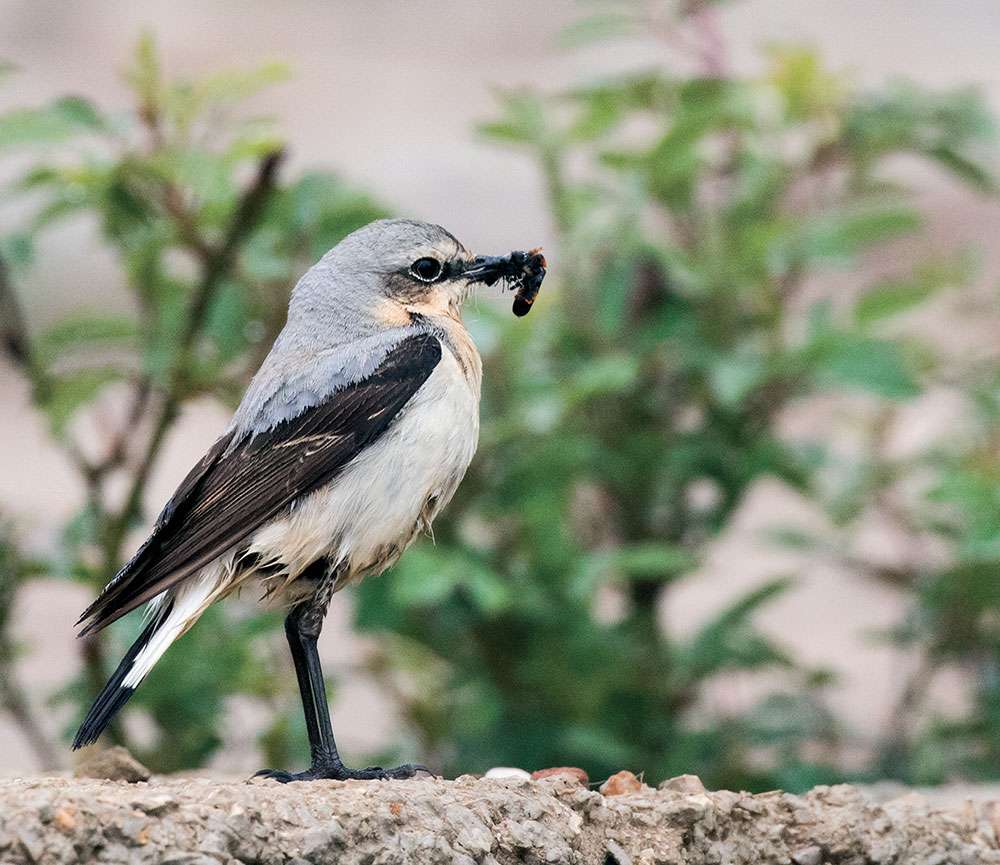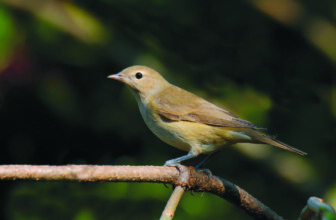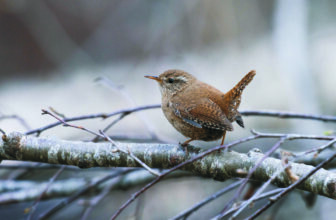
(Above: Wheatear (also known as Northern Wheatear) Oenanthe oenanthe (male in spring plumage)
I fancied a chat so I went out at what looked the right time – and eventually had one. All by myself. Well, in fact I had three.
No, I’ve not been going mad and talking to myself.
But when the weather looked right earlier this Autumn I took to the public footpaths in the fields around Cranleigh in search of two very special visitors I hoped would be out there.
I was handsomely rewarded and delighted to find my targets: two birds who are members of the chat family. Cue the Whinchat and the Wheatear.
The first is a very neat looking bird the size of a Robin. It has streaky brown and black upperparts, a black tipped white tail, and peachy throat and breast. Both sexes have a bright stripe above the
eye, orangey in the female and white in the male, which has black sides to the head.
Fatter and larger, the summer male Wheatear has a plain grey crown, neck and back, black wings and eye mask, buff/orange underparts, a white rump and a thinner black tail band than its congener. By the autumn it is more dull brown above and similar to the female.
Like so many species, they both bred in Surrey in the first half of the 20th century but their favoured habitat declined, ranges contracted and they have not tried to nest for decades.
But they do still pass through Cranleigh and its surrounding villages on migration. Their journeys take them from their sub-Saharan and central African wintering grounds to the moorlands and open country of Europe.
Both can be found near one another in their breeding areas but they prefer slightly different surroundings. The Wheatear favours rough ground and perches like a sentry on boulders or fence posts. The Whinchat prefers vegetation such as bracken or gorse for its lookout station.
Although they are not recorded here every year they are probably annual visitors. However they are easily missed because they tend to be shy and do not hang around for long. After feeding up on insects for a day they are usually gone by the next.
Autumn seems the best time to see them because numbers are swelled by juveniles after a successful breeding season. I am unaware of any local Whinchat sightings in the spring but the Wheatear drops by in both seasons.
The Wheatear is often the first spring migrant to reach Britain and when birders find one they get excited because they know the days of winter are numbered and more summer birds are on their way. The earliest in our vicinity was in Ewhurst on March 21 1968.
1998 was a bumper year with late March to early May sightings from a number of observers at Alderbrook, Baynards, Holmbury cricket pitch, Willinghurst, and Winterfold.
The Whinchat’s title comes from the gorse, furze – or ‘whin’ – bushes it is often associated with. Until this year all our records were from various commons, fields, heaths and meadows in September.
But on my August 25 chat expedition this year I was delighted to find two juveniles sitting prominently on vegetation beside a public footpath at Rowly. Thanks ‘Mr Farmer’ for leaving some ‘set-aside’ when you harvested the field! It paid off.
I was soon aware of another, larger bird hopping on the well-trod path in front of me but it was partially obscured by long grass. Suddenly it was in the open. Yes! A Wheatear! I could see all three birds at once through my ‘bins’. It was a special moment to treasure and not one I expected.
Then two days later I found another young Wheatear in a field off Barhatch Road. As there were no rocks there to hunt insects from, it was using the next best thing – a round hay bale.
These seem to be a favourite vantage point on autumn migration – but be prepared to look at hundreds and see nothing!
What gives a Wheatear’s identity away is its flashy white rump as it flies away from you. And it is from this it gets its name.
Okay, you may see it in a wheat field but it has nothing to do with ears of wheat. This bird is so called because old country folk referred to it, quite simply, as the… ‘White arse’.
I’ve seen four of them locally this autumn and four Whinchats. It’s been an unusually good harvest.
Twitter – @Crane_Spotter











